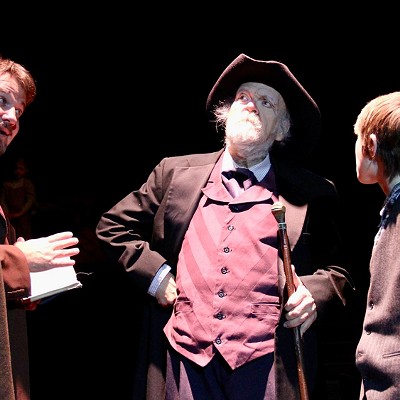Senate Bill 573, if passed with updated language recommended by a working committee convened by Gov. Mary Fallin with a grant from the National Governors Association, could make Oklahoma a model for national charter school law, said Russ Simnick, senior director of state advocacy and services for the National Alliance for Public Charter Schools.
Oklahoma has one of the nation’s weakest charter school laws, said Simnick, a member of the governor’s working committee.
“We made Oklahoma a priority in our organization as one of the states where we believe we can really make a big impact,” he said.
Key points of SB 573, authored by Sen. Clark Jolley and Rep. Lee Denney, include creating a new state commission with the authority to authorize a charter school anywhere in the state, enhancing the application process and accountability standards that charter schools face and allowing charter schools to borrow money and carry debt.
“I think the bill is a very strong move forward for charter schools in this state,” said Chris Brewster, director of Santa Fe South, a charter school district serving south Oklahoma City.
The bill passed the state Senate last year but was held over in the House of Representatives until this session when it was withdrawn from the common education committee and referred to the appropriations and budget committee. Lawmakers have until April 10 to pass the bill out of committee for a hearing on the House floor.
Greater flexibility, accountability
Charter schools are often misunderstood by the general public, said Justin Hunt, principal at Harding Charter Preparatory High School in northwest Oklahoma City.
“When I taught in public school, I didn’t understand,” Hunt said. “I thought charter schools had the upper hand, but, realistically, we don’t.”
Primarily urban, charter schools are public schools that are afforded greater flexibility for greater accountability. Charter schools are accountable to their students, school boards, sponsors and the state department of education.
They must meet the same academic standards as traditional public
schools.
Superintendents tend to double as maintenance people, custodians and bus drivers.
Oklahoma City Public Schools sponsors 12 charter schools, offering students and families a variety of educational choices, said Tierney Tinnin, the district’s media services director.
The schools are open to anyone, but they give preference to in-district students. A lottery is used to accept new students when a charter school reaches its maximum capacity.
Charter schools receive funding based on the state’s per-pupil formula, and sponsors can take up to 5 percent as an administration fee. Charter schools do not receive ad valorem taxes. They often receive grants or donations from private foundations.
“Charter schools have zero fiscal impact to the state,” Simnick said.
Oklahoma’s 25 charter schools (including two virtual schools) serve approximately 14,000 students, about 2 percent of Oklahoma’s common education student population.
Charter school challenges
Currently, charter schools cannot incur debt, making capital expenses challenging, said Brewster, whose school sites include a former YMCA, Christian school and hardware store.
Santa Fe South High School meets in a formerly abandoned Oklahoma City elementary school, and the district just purchased an old National Guard armory to house its early childhood education center. The district hoards money from its already-low per-pupil allocation to afford capital purchases.
Harding Charter Preperatory High School and Harding Fine Arts Academy occupy the same building, the former Harding High School building. The schools share common spaces such as the cafeteria and the gymnasium.
Charter schools also deal with a lack of administration and support positions. There are no funds for them. Superintendents tend to double as maintenance people, custodians and bus drivers.
“I’ve probably done more painting and caulking here than in my own home,” Harding Fine Arts Principal Dr. Sherry Rowan said.
The Oklahoma Public School Resource Center, a new nonprofit, aims to help public schools, especially rural and charter schools, by providing technical services in five areas: technology, legal, teaching and learning, finance and communications.
“Smaller schools don’t have those fully dedicated resources,” said Brent Bushey, OPSRC executive director.
Us vs. them
Since charter schools first opened in Oklahoma in the early 2000s, a narrative that pits charter schools against traditional public schools developed, said Sam Duell, executive director of school choice for the state department of education.
“I think that’s kind of antiquated,” Duell said. Traditional public school districts that sponsor charter schools diversify their educational portfolios, creating a healthier ecology, Duell said.
“Blanket programs and blanket curriculums are not necessarily going to work for each child,” he said.











